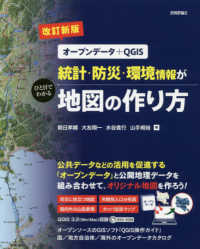Full Description
This book offers an updated and comprehensive view of the possibilities of didactic audiovisual translation (didactic AVT or DAT) in language education, by presenting the methodological bases that support its pedagogical use at all levels of linguistic proficiency, as well as in different educational stages and contexts.
The volume defines the main didactic AVT modes, accompanied by general recommendations, specific guidelines, complete sample lesson plans and sequences, and models for assessment. Didactic AVT is described in this book as an effective pedagogical resource that can improve students' language competence and trigger core factors in education, such as learners' motivation and engagement in language classes, their cognitive processes, their creativity, and the active use of ICTs in the classroom. From the perspective of educators, DAT provides a pool of multipurpose resources that may help them to enrich their classes from a pedagogical, linguistic and intercultural standpoint.
This book will be a valuable resource for graduate students, scholars, and practitioners in translation studies, particularly those interested in audiovisual translation and foreign language learning.
Contents
Contents, Acknowledgement, List of acronyms and abbreviations, Introduction, AVT modes,The need for a volume on DAT, Aims and scope of the book, Copyright considerations, Structure of the book, References, Chapter 1, 1.1. Didactic subtitling, 1.1.1. Didactic interlingual standard subtitling, 1.1.2. Didactic interlingual reverse subtitling, 1.1.3. Didactic intralingual subtitling, 1.1.4. Didactic creative subtitling, 1.1.5. Didactic SDH, 1.2. Didactic dubbing, 1.2.1. Didactic interlingual reverse dubbing, 1.2.2. Didactic intralingual dubbing, 1.2.3. Didactic creative dubbing, 1.3. Didactic audio description, 1.4. Didactic voice-over , 1.5. Didactic free commentary, 1.6. Teacher training in Didactic Audiovisual Translation, 1.7. Closing remarks, References, Chapter 2, 2.1. Educational bases of didactic AVT, 2.2. Introducing didactic AVT in the language classroom, Primary education, Secondary education, Higher education, Bilingual education: CLIL and EMI, 2.3. Didactic AVT applicability to diverse LE contexts, 2.4. Closing remarks , References, Chapter 3, 3.1. Didactic subtitling types, 3.2. Skills enhancement through didactic subtitling , 3.3. Didactic SDH, 3.4. Didactic subtitling and didactic SDH: guidelines and assessment samples, 3.5. Lesson plan samples , 3.6. Closing remarks, References, Chapter 4, 4.1. Didactic dubbing and didactic voice-over types, 4.2. Skills enhancement through didactic dubbing and didactic voice-over, 4.3. Didactic dubbing and didactic voice-over guidelines and assessment samples, 4.4. Lesson plan samples, 4.6. Closing remarks,References, Chapter 5, Didactic Audio Description and didactic free commentary, 5.1. Didactic AD and didactic free commentary types, 5.2. Skills enhancement through didactic AD and didactic free commentary, 5.3. Didactic AD and didactic free commentary guidelines and assessment sample, 5.4. Lesson plan samples, 5.5. Closing remarks, References, Conclusions, Apendix, Index







